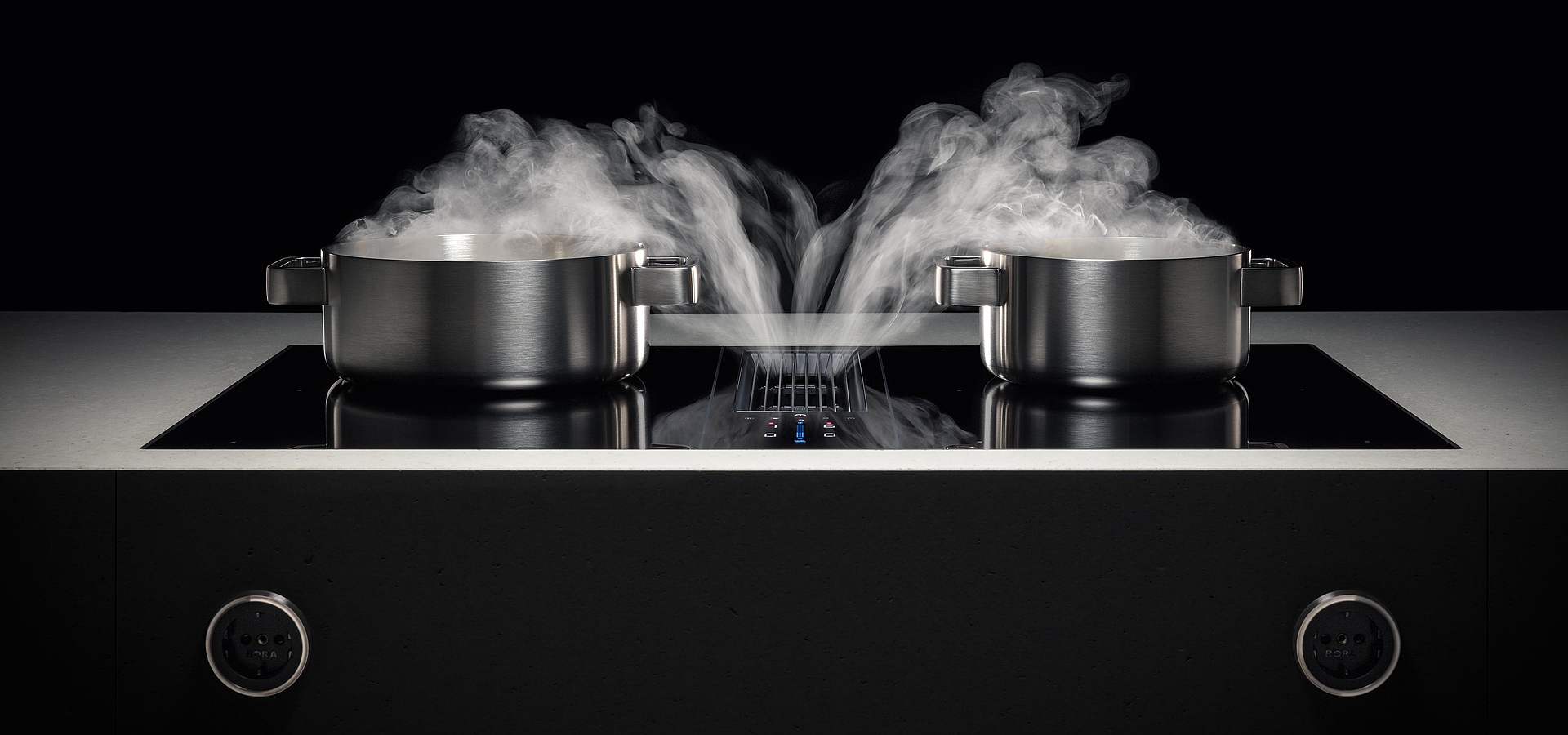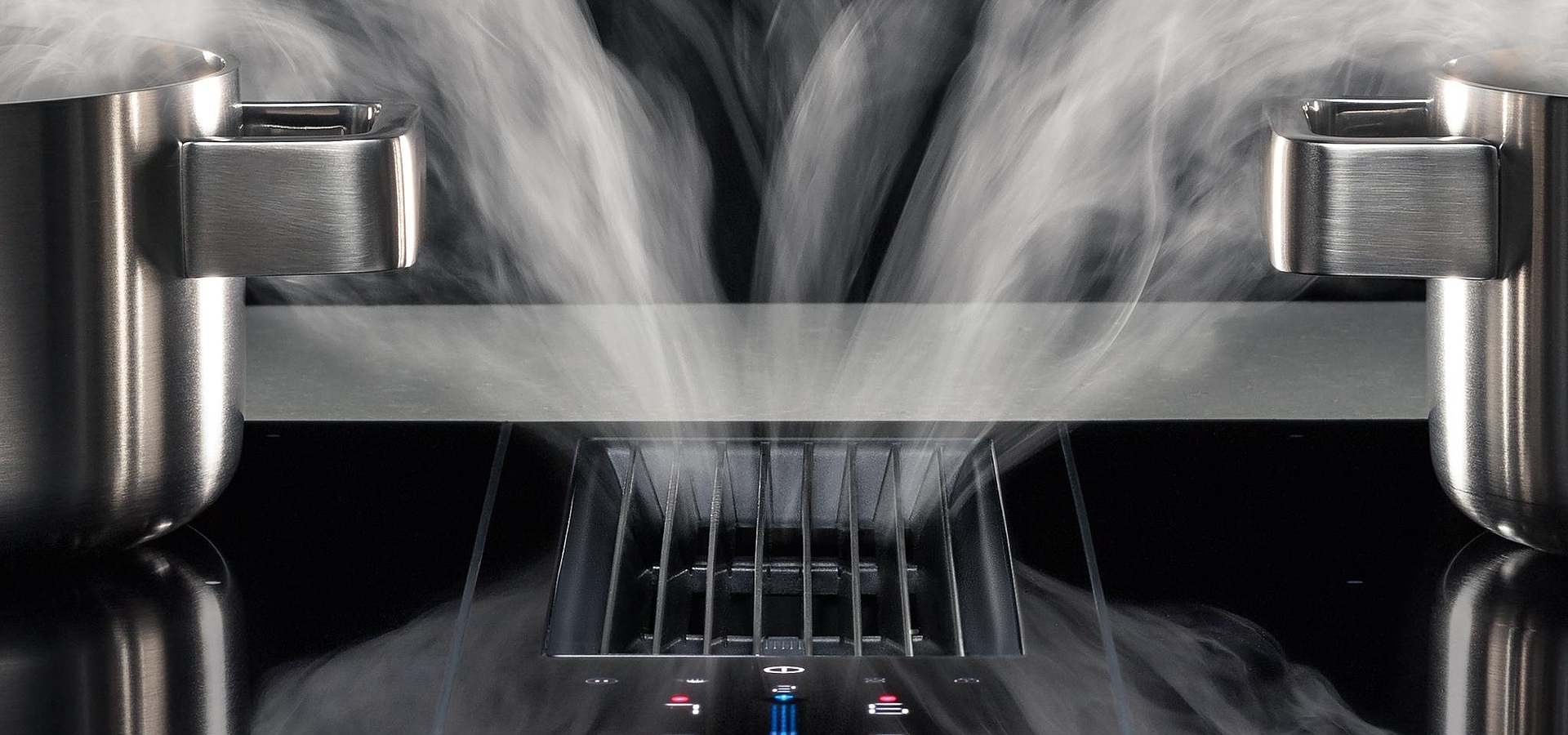The extractor hood is a very useful tool in the kitchen. It draws in cooking vapours – so-called waste steam – and stores particles and odours in filters. This principle is the same with all extractor hoods, whether exhaust air or recirculation models. The result: fresh air in the kitchen; the room and your clothes do not smell of food for hours afterwards and the kitchen units and walls are not covered with a sticky layer of grease. So far, so good. However: despite all of its uses, the conventional extractor hood also has its drawbacks.
Compared to extractor hoods, downdraft extractors are clearly a step ahead.

